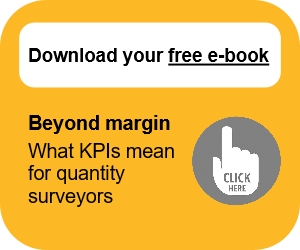Project benchmarking
See also: Benchmarking as business tool.
Benchmarking is a process by which the estimated performance (often cost) of a project is compared to other similar projects. This can highlight areas of design that are not offering good value for money and can help in the assessment of tenders from suppliers and contractors.
Benchmarking is increasingly being carried out on public projects, where the government has access to large amounts of cost data for similar projects. For example, when analysis of the recent schools programme was carried out, it was found that it '... exposed variations in costs that could not be justified by project differences' (ref. Cabinet Office: Government Construction Strategy, May 2011).
It is now proposed that cost benchmarking should be carried out across all government capital programmes to create baselines for a cost/value-led approach to procurement.
In the private sector, comparable cost information may not be so readily available. However, large organisations may have access to in-house cost information, and some cost information is published. Comparative information can also be purchased from sources such as the Building Cost Information Service (BCIS). See BCIS Online for a description of the tender price and duration information available.
It is important, however, that benchmarking does not simply consider construction costs, as these are only a small proportion of whole-life costs, and setting a low benchmark for construction could result in higher operating, maintenance and refurbishment costs throughout the life of the building.
There is now an increasing amount of data available about energy use, sustainability and whole-life costs such as:
- CarbonBuzz, an on-line service that allows architects and engineers to share project forecasts and energy use anonymously.
- Bench iT, a service for quantity surveyors to benchmark KPI's
- The Carbon Trust Energy Benchmarking
- The Chartered Institute of Building Services Engineers.
- Building Research Establishment Environmental Assessment Method (BREEAM).
- Closing the Loop – Benchmarks for Sustainable Buildings (RIBA).
It is important also to consider both quality and time, as the lowest cost option may not always offer the best value for the client or deliver a completed project within the required timeframe.
[edit] Related articles on Designing Buildings
- Bench iT
- Benchmark.
- Benchmarking as business tool.
- Best practice.
- Business case.
- Cross estimating method.
- Design review.
- Design quality.
- Earned value analysis.
- Estimate.
- Health performance indicators in the built environment.
- Key performance indicators.
- Pareto analysis.
- Project performance management.
- Public sector comparator.
[edit] External references
- Government construction strategy, Page 11.
Featured articles and news
British Architectural Sculpture 1851-1951
A rich heritage of decorative and figurative sculpture. Book review.
A programme to tackle the lack of diversity.
Independent Building Control review panel
Five members of the newly established, Grenfell Tower Inquiry recommended, panel appointed.
Welsh Recharging Electrical Skills Charter progresses
ECA progressing on the ‘asks’ of the Recharging Electrical Skills Charter at the Senedd in Wales.
A brief history from 1890s to 2020s.
CIOB and CORBON combine forces
To elevate professional standards in Nigeria’s construction industry.
Amendment to the GB Energy Bill welcomed by ECA
Move prevents nationally-owned energy company from investing in solar panels produced by modern slavery.
Gregor Harvie argues that AI is state-sanctioned theft of IP.
Heat pumps, vehicle chargers and heating appliances must be sold with smart functionality.
Experimental AI housing target help for councils
Experimental AI could help councils meet housing targets by digitising records.
New-style degrees set for reformed ARB accreditation
Following the ARB Tomorrow's Architects competency outcomes for Architects.
BSRIA Occupant Wellbeing survey BOW
Occupant satisfaction and wellbeing tool inc. physical environment, indoor facilities, functionality and accessibility.
Preserving, waterproofing and decorating buildings.





















Comments
To start a discussion about this article, click 'Add a comment' above and add your thoughts to this discussion page.